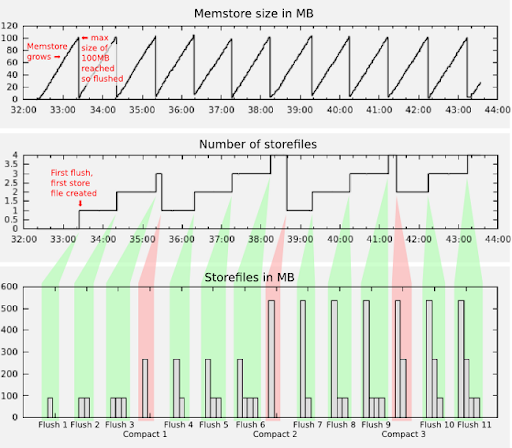HBase Internals: Visualizing HBase Flushes And Compactions
Outerthought folks[1] have put together a great visual and technical explanation of HBase flushes and compaction for usual scenarios like insert, delete, multi-column families, multi-regions:
When something is written to HBase, it is first written to an in-memory store (memstore), once this memstore reaches a certain size, it is flushed to disk into a store file (everything is also written immediately to a log file for durability). The store files created on disk are immutable. Sometimes the store files are merged together, this is done by a process called compaction.
Just an example, the HBase basic compaction process:
Outerthought guys are producing the Lily CMS which is built on top of HBase. ↩
Original title and link: HBase Internals: Visualizing HBase Flushes And Compactions (NoSQL databases © myNoSQL)
